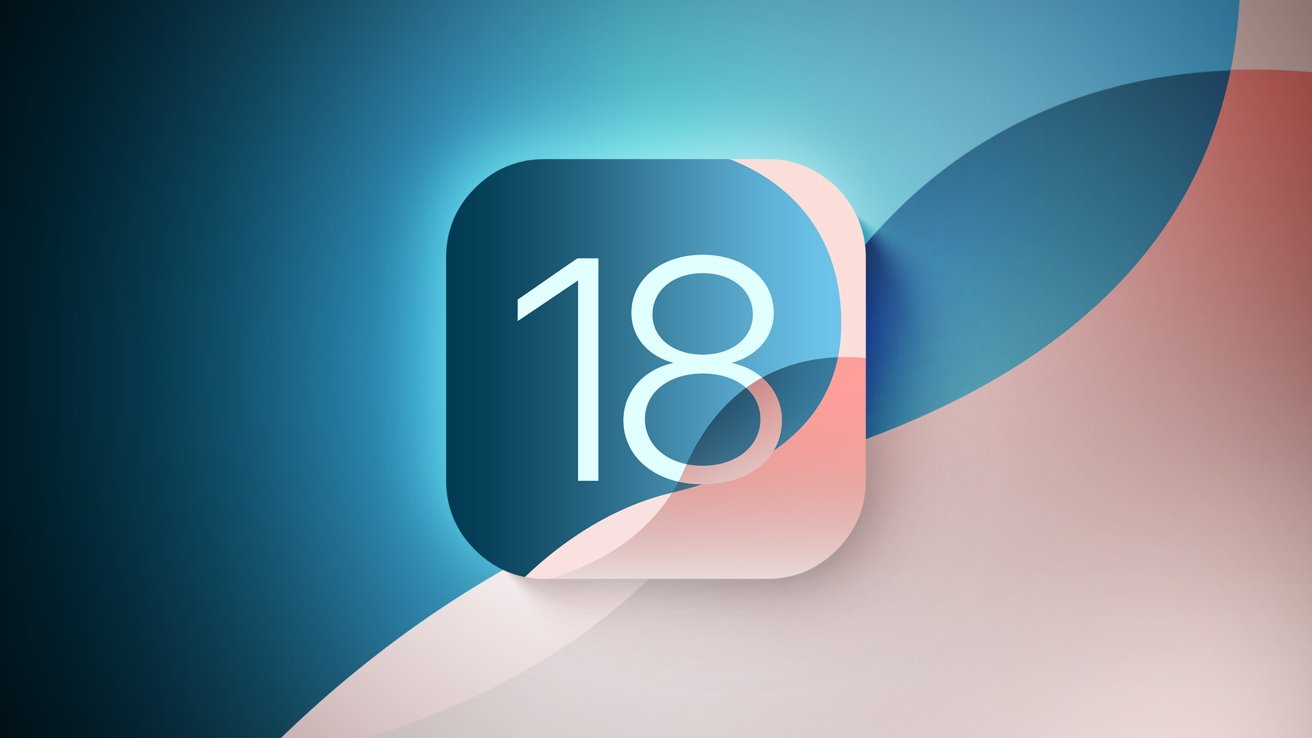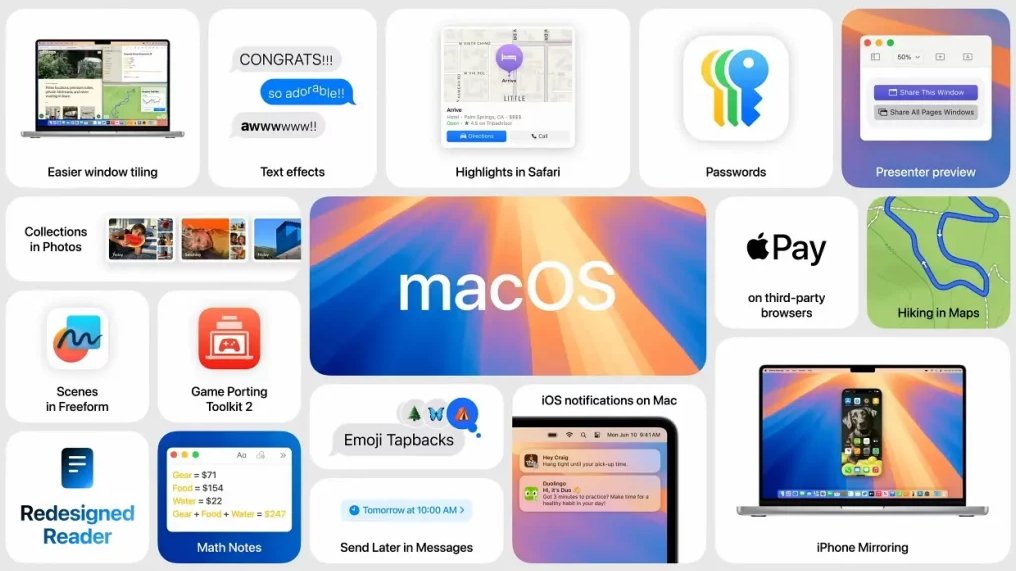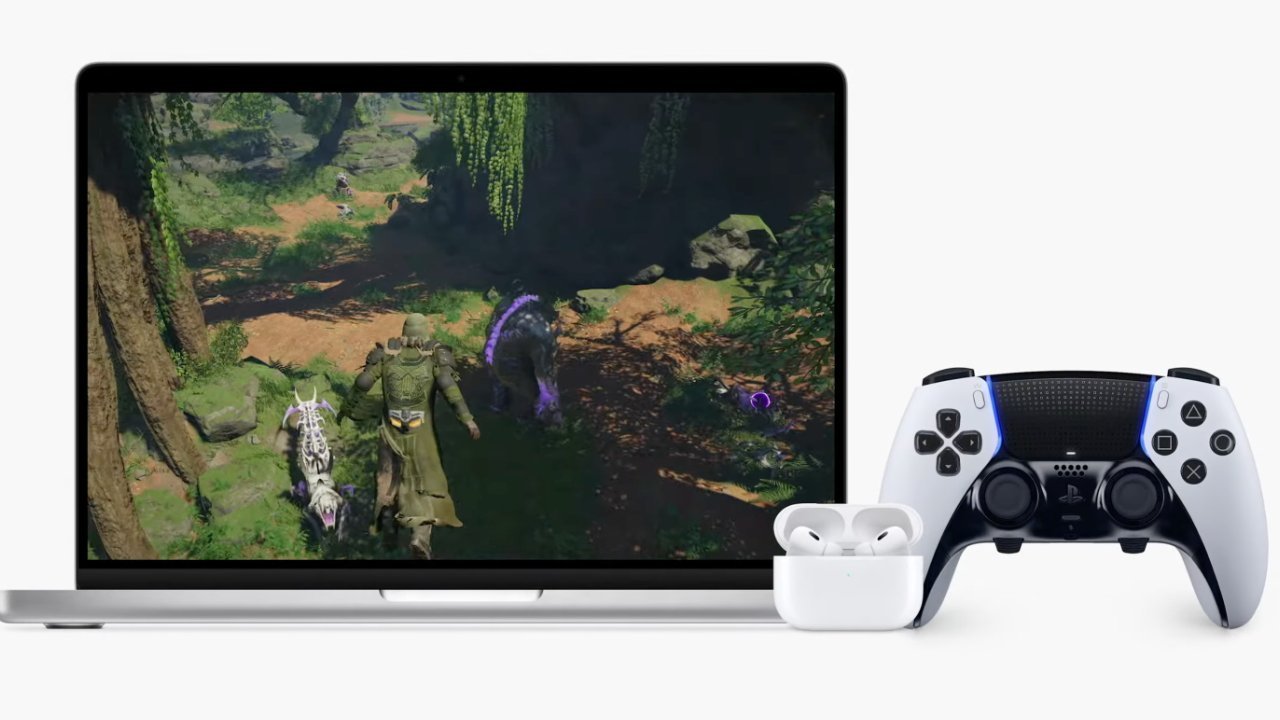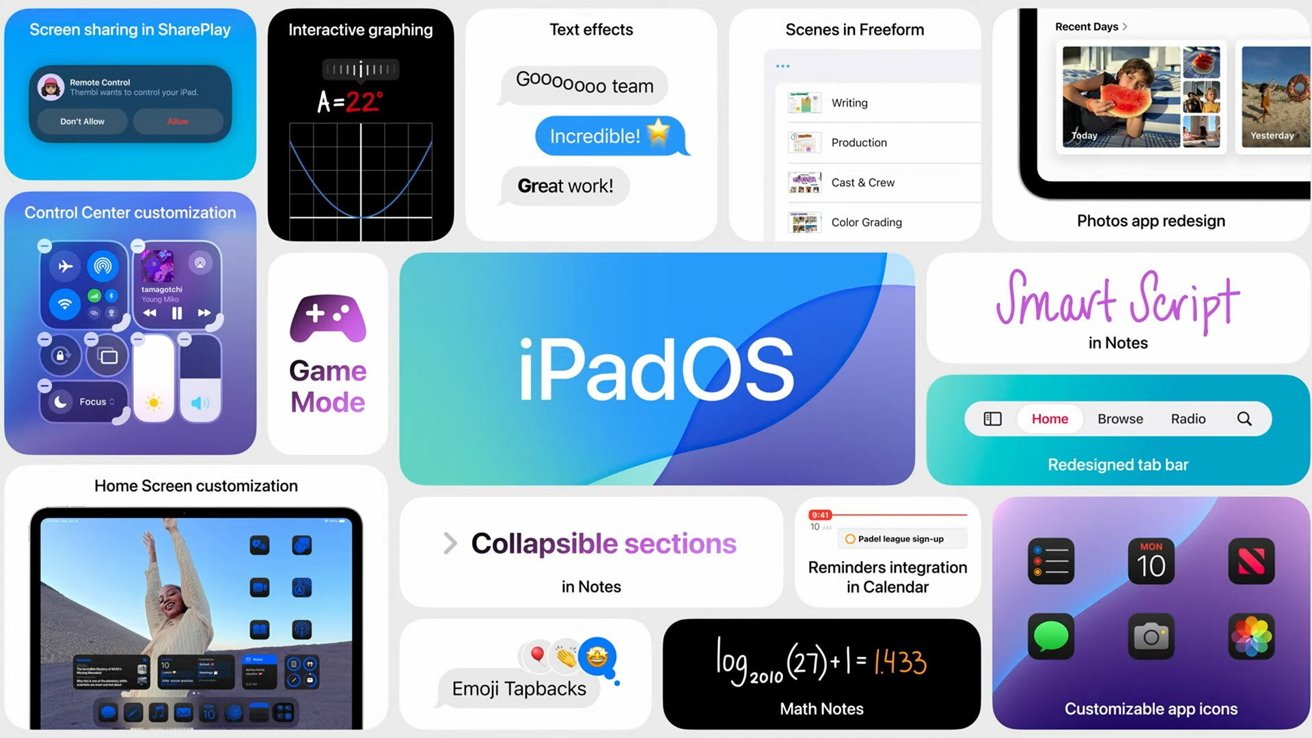
iOS and iPadOS 18, along with watchOS 11 and macOS 15 Sequoia, promise many new features

Apple’s line in the sand for Apple Intelligence still leaves many new features in iOS 18, iPadOS 18, watchOS 11, and macOS Sequoia for older devices – with a few caveats.
The list of devices that can run the upcoming iOS 18 and iPadOS 18 and macOS Sequoia goes as far back as 2017 in some cases, but nearly all of those models will not be getting the Apple Intelligence features.
Apple Intelligence is a major set of new abilities designed to assist users in finding answers, summarizing information, and working with their data. Due to the complexity of these AI technologies, only the latest iPhone 15 Pro and iPhone 15 Pro Max, or iPads and Macs with the M1 chip or newer qualify for those AI-based features.
This is why Apple split its WWDC 2024 keynote into two parts: new features coming in the next OS releases, and then a spotlight on Apple Intelligence.
What the company didn’t say is that there are a handful of features in iOS 18, iPadOS 18, watchOS 11, and macOS Sequoia that won’t be available for the very oldest of the compatible devices.
Which devices can run iOS 18, iPadOS 18, watchOS 11, or macOS 15
Here are the oldest iPhone models that will be able to run iOS 18:
- iPhone XR (2018)
- iPhone XS (2019)
- iPhone SE second generation (2020)
Any newer models, such as the iPhone 11 and higher, are also compatible.

Many of the features coming to iOS 18, beginning in the fall of 2024
These are the oldest iPad models that will be able to run iPadOS 18:
- The seventh-gen iPads and later (2019-2021) with a 10.2-inch screen size
- The tenth-gen 10.9-inch iPad (2022)
- The fifth-gen iPad mini (2019) and later
- The third-gen iPad Air (2019) and later
- All models of the 11-inch iPad Pro
- The third-generation 12.9-inch iPad Pro (2018) or later.
On the Apple Watch front, the 1st-generation Apple Watch SE — along with the Series 4 and Series 5 Apple Watch models — have been dropped from compatibility with watchOS 11 entirely. The second-gen Apple Watch SE, along with the Series 6 and later models, are all supported.

macOS Sequoia features significant new additions as well as shared new features with iPhone and iPad
Not all listed features will come to all compatible devices
There is an obvious dividing line that separates Apple products that can handle the Apple Intelligence features from the ones that can’t, which Apple made clear in its presentation. However, when it comes to which older devices get which listed OS update features, it’s nowhere near as obvious.
As an example, the forthcoming iPhone Mirroring feature won’t run on Macs that don’t have a T2 security chip. This means the two iMac models from 2019 won’t be able to use that feature, since they don’t support Touch ID.
One of the most anticipated features of the new OS updates is expected to be the improvements to Siri to better handle requests using everyday language, including accents and variations in phrasing. It should also be able to access a far wider range of information, resulting in better answers and abilities to handle tasks on-device.
Apple has implied, but has not explicitly confirmed, that older devices which are compatible with these OS updates could get some level of improved Siri functionality. Apple talked in its presentation about handing off certain requests to its new Private Cloud Compute feature.
The second-gen Apple Watch SE can’t work with the new Ultra Wideband home keys feature. The Series 6 Apple Watch can’t take advantage of the Tap to Cash feature.
Game Mode in iOS 18 requires second-gen AirPods. Personalized Spatial Audio requires third-gen AirPods Pro.

Game Mode focuses the graphics, processing, and audio towards game-playing.
You’ll need an iPhone 14 or later to use the touted Messages Via Satellite texting feature in iOS 18. The live audio transcription feature in iOS 18 requires an iPhone 12 or later, even though Visual Voicemail’s live transcription works on models going back to the iPhone XS.
The Ultra Wideband unlock feature that allows compatible home locks to open by detecting the presence of your iPhone requires at least an iPhone 11, and no SE model is compatible with it either.
Likewise, the iPhone 11 is the mimimum needed — or any iPadOS 18-compatible iPad — for the Enhance Dialogue feature if you’re watching a movie on those devices. You’ll need at least an iPhone 12 or third-generation iPhone SE if you need the forthcoming Eye Tracking or Music Haptics accessibility features.
To use the eye-tracking accessibility feature on an iPhone, you’ll need the iPhone 12 or later. For iPads, you’ll need an 11-inch iPad Pro third-gen or later, or a fifth-gen 12.9-inch iPad Pro or later.
The current 10th-gen iPad, third-gen iPad Air or later, and current 6th-gen iPad mini can also be used.
The “Smart Script” feature that emulates your own handwriting works on the most recent-generation iPad and iPad mini, the 10.9-inch fourth-gen iPad Air or later, the third-generation 11-inch iPad Pro, and the fifth-generation 12.9-inch iPad Pro or later.

New features coming to most iPad models with the release of iPadOS 18.
Some other features, such as Math Notes and auto-categorization and summaries in Mail, may be part of Apple Intelligence and thus not available to older devices. As the beta program for the new OSes continues, testers will undoubtedly discover some surprises and some restrictions.
It’s also not clear when iOS 18 and the rest will gain full support for languages other than English. Apple has said that transcription features will support a variety of languages when the rollout of the new operating systems is complete.
The bottom line
If you were thinking of upgrading one or more of your devices anyway, now or the near future is a good opportunity – especially if you want the features of Apple Intelligence. We expect that all models of the iPhone 16, when they arrive, will be compatible with Apple’s new AI engine as well.
We also believe that any future models of iPad or Mac will also support Apple Intelligence and the full feature set of iOS 18, iPadOS 18, watchOS 11, and macOS Sequoia.
For those feeling some Apple Intelligence envy, it’s worth noting that not every feature of Apple Intelligence will debut before the end of 2024. This means that users of both new and older devices will be learning to use the “core” feature set of iOS 18, iPadOS 18, and macOS Sequoia first.
For most compatible older devices, these updates will keep their equipment useful for a while yet. For many, however, Apple Intelligence’s full arrival across 2025 may push them to consider upgrading sooner rather than later.




